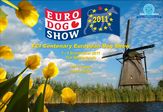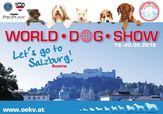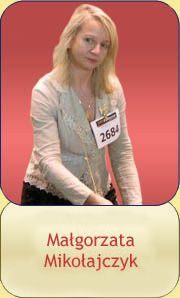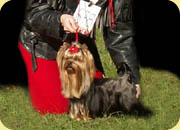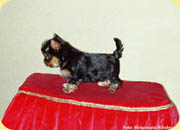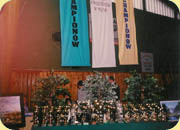 |
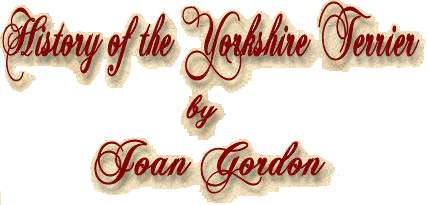
copyright © 2006
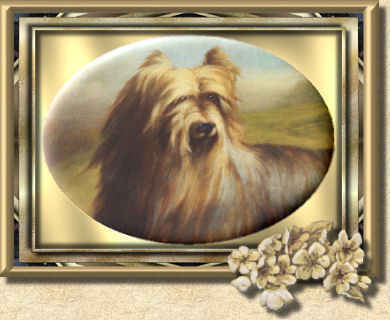
Huddersfield Ben
Breeder W. Eastwood of Eastwoods Yard, Huddersfield
Owner: Mary Foster
Born 1865 - Died 1871
Painting owned by Joan Gordon
The facts concerning the origins of the Yorkshire Terrier are usually presented in modern books as being unknown.
According to many present-day writers Yorkshires were the result of a number of breeds being bred together to produce the desired points.How anyone could believe, or even imagine, these early fanciers would have bred from a Dandie Dinmont, a breed with an uneven top line; a Maltese,a totally white breed lacking any blue or tan markings or from a smooth coated Manchester Terrier(originally a smooth coated Old English Terrier)is not being realistic.The name Manchester was not even given to this breed until a later day. We can only guess this latter breed was named because one of Huddersfield Ben's ancestors was a dog named Albert from Manchester.
One of the troubles in getting the Yorkies origins correct is that each of the three breeds necessary to arrive at the final breed of Yorkshire Terrier are now extinct.
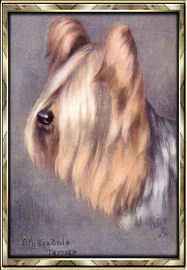
Clydesdale Terrier - circa 1880
Along the path to their disappearance the breeds simply merged into other breeds or their type gave way to another version.
The primary breed that is responsible for the Yorkshire was the Clydesdale Terrier (the blue and tan silky coated version of the Skye); the second breed was the Waterside Terrier(or Otter Terrier) and the third was the Old English Terrier(toy rough and broken haired).
The facts concerning these breeds are well recorded in books starting in 1846. However,later day authors did no research or the records were unavailable to them, or they simply preferred to go along with what someone else had written.
Yorkshire Terriers were given their breed name by 1874, although it had been around since 1870.
Originally they were known and shown as Broken Haired Scotch Terriers or Toy Terrier (rough and broken haired).
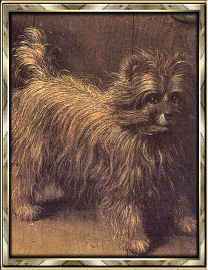
Broken Haired Toy Terrier
Almost all of the classes were divided by weight. The classes were for Broken Haired or Rough Scotch Terriers less than 5 lbs.or 6 lbs. and
under; Toy Terriers 4 lbs. and under,or 5 lbs.not exceeding 7 lbs.,or 6 lbs. and over;or Blue Scotch Terriers under 7 lbs.or 7 lbs. not exceeding 9 lbs.
The largest weight class in which they were reported to have been shown was for Broken Haired Scotch Terrier 9 lbs. not exceeding 12 lbs.
This record should prove that although there were larger Yorkshires they were not being shown at the dog shows.
The record proves that the small size was available for breeding from early days.
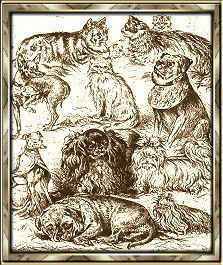
The cat and dog show at the Crystal Palace
Note the ribbon on the Yorkie's head and this is 1878
It would appear that Yorkies were shown both ways.
Expect it was based on how much top knot the dog had.
At the Crystal Palace show in 1871 held in London, Mrs. Jonas(Mary) Foster (who was acknowledged as having brought the breed to its prominence, as well as being the first woman to judge dogs in England)showed in two classes.
In Broken Haired Scotch or Yorkshire Terrier,her Huddersfield Ben (KC no. 3612) was second being beaten by his son, Mrs. Foster’s Bruce (KC no. 3595).
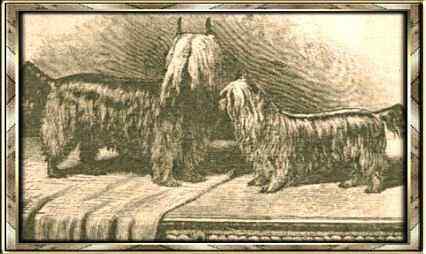
Huddersfield Ben and Katie
from Stonehenge's "Dogs of the British Isles"
Third Edition 1878
Third place was won by her Emperor (KC no. 3609) also Ben’s son.
She also showed dogs in Toy Terrier Broken Haired under 5 lbs. winning 1st with her Little Kate (KC no. 4001), later owned by Lady Giffard.
Kate was also a daughter of Huddersfield Ben.
Third in the class was Ben’s son, Foster’s Sandy (KC no. 4016). In 1873 Mrs. Foster won a 3rd place in Broken Haired Scotch and won all 3 placings with her dogs in the Broken Haired Toy Terrier under 5 lbs.
The early pioneer breeders registered their dogs in two classes in the 1st studbook, Class XXXII – Broken Haired Scotch and Yorkshire Terrier dogs and bitches.
Seventy-six dogs were registered in this class.Of these 52 were owned or bred by known early Yorkie fanciers.
The second classification was XL Toy Terriers (Rough and Broken Haired), 45 dogs were registered as such. Twenty-five of these appear in early Yorkshire pedigrees, some of these even registered their dogs as being sired by Ben.
In Huddersfield Ben's registration, Mrs. Foster included all of Ben's pedigree and this was in 1874.
Mr. Ed Bootman, a well-known early fancier gave an article to 'The English Stockeeper' that was printed in 1887. In this article, Mr. Bootman gave a complete record of the early dogs involved in Huddersfield Ben's pedigree.
Mr. Bootman also gave the same facts to Mr. Peter Coombs for his article on the breed in 'The American Book of The Dog' published in 1891.
Quoting Mr. Coombs from his book...
“This history, although published in the Stockeeper in 1887,has never been publically questioned."
Mr. Coombs owned the first Yorkie to become an American Kennel Club Champion of Record, Ch. Bradford Harry, who was a great grandson of Ben.
The record of the early dogs; Swift’s Old Crab, a cross-bred Scotch Terrier, Kershaw’s Kitty, a Skye, and an Old English Terrier bitch kept by J. Whittam then residing at Hatter’s Fold, Halifax were the progenitors of the present race of Yorkshire Terriers.
These dogs were in the zenith of their fame forty years ago.
The owner of Old Crab wasa native of Halifax and a joiner (carpenter) by tradeHe worked at Oldham for some time as a journeyman (hired by the day) and then he moved to Manchester, where he kept a public house. Whether he got Crab at Oldham or Manchester,I have not been able to ascertain.He had him in Manchester and from there sent him several times on a visit to Kitty.The last visit was in about 1850.
Crab was a dog about eight or nine pounds weight, with a good terrier head and eye, but with a long body resembling a Scotch Terrier.The head, muzzle and legs were tanned;the hair on the body was three or four inches in length.
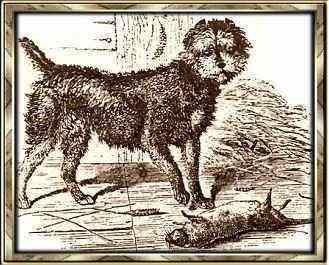
Peto, A Scotch Terrier
Old English Rough
Broken haired Terrier
Kitty was a bitch different in type from Crab.She was a drop eared Skye with plenty of coat of a blue shade but destitute of tan on any part of the body.Like Crab she had no pedigree.She was originally stolen from Manchester and sent to a man named Jackson, a saddler in Huddersfield, who when it became known that a five pound reward was offered in Manchester sent her to a person named Harrison then a waiter at the White Swan, Hotel Halifax to escape detection, and from Harrison she passed into the hands of J. Kershaw of Bishop Blaise, a public house, which once stood on the Old North Bridge in Halifax. Prior to 1851 Kitty had six litters all of which I believe were by Crab.
In these six litters she had thirty-six puppies, twenty eight of which were dogs, and served to stock the district with rising sires. After 1851 when she passed in the possession of Mr.Jagger she had forty four puppies, making a total of eighty.
Mr. Whittam's bitch, whose name I cannot get to know, was an Old English Rough Terrier with tanned head, ears and legs and a sort of grizzle (blue) back.She was bred on the lines of Speed.Like the others she had no pedigree.She was sent to the late Bernard Hartley of Allen Gate, Halifax,by a friend residing in Scotland.When Mr. Hartley had got tired of her he gave her to his coachman Mason, who in turn gave her to his friend Whittam, and Whittam used her for breeding purposes.Although this bitch came from Scotland, it is believed her parents came from the district."

Yorkshire Terrier
circa 1889 - 1891
Following the trend of Huddersfield Ben's ancestors being stolen his great grandsire Old Sandy, a grandson of Old Crab, was stolen in 1861 on his way back from a show.
A further comment on the original stock Mr. Rawdon Lee writing on the breed in 1896 in Modern Dogs reports "that they were brought by some of the Paisley weavers into Yorkshire and there suitably admired, pains were taken to perpetuate the strain - and I am sorry that when the information was given me, nearly a quarter of a century ago by a Yorkshire Weaver then sixty years old and since dead, I did not obtain more particulars about what was in his day called the Scotch Terrier."
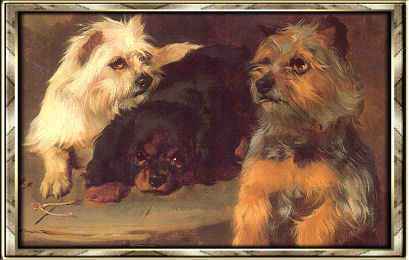
Old English Black and Tan Terrier, Rough coated
The description of the ancestors and Mr. Lee's comments concern the breeds very early days go back into the 1850's. In 1891 Mrs. Foster speaking of Bradford Hero, winner of 97 1st prizes said "The pedigree of Hero includes all the best dogs of her day - and thirty five years back and they were originally bred from Scotch Terriers and shown as such until a few years back. The name Yorkshire Terrier was given to them on account of their being so much improved in Yorkshire."
In the book The Australian Terrier and The Australian Silky Terrier by W. A. Wheatland published in 1964 there is a record of similar breeding developing on a different continent that paralleled the development of the Yorkshire Terrier in England.
Mr. Scott Ross of Tasmania claimed that he and his family who had lived in the area for over one hundred years had bred the Blue and Tan Terriers for many years."Mr. Ross said it's known that some time prior to 1820 the free settlers, as well as my family, had bred Broken Coated dogs of a blue sheen body coat with tan legs and face, weight approximately 7 - 10 lbs.These were terriers brought from England."
Sometime in the late 1870's the wife of the Superintendent of the Hubert Hospital acquired a pair of these dogs from which she bred a litter. Upon her return to England she brought the puppies with her and she started breeding these terriers in England.
Stonehenge reported in the 1885 edition of his book that there now existed in England a terrier from Australia that seemed to be a cross with a Yorkshire. (probably an early Silky Terrier)
Looking at the three breeds that shared the responsibility for the final creation of the Yorkshire Terrier. We find they were all breeds that started out as one breed, and then that breed split apart or merged into a new named breed only to have some of these new breeds repeat the process of split or merge until their original breed names disappeared.
First we have the Skye known as such since at least 1576.For years there existed within this breed two types of coats; the long harsh haired coat and the long silky coat.The allowed colors were dark or light blue,gray or fawn with black points.As time went on and dog shows came into being they were all shown as broken haired Scotch Terriers even the silky blue and tan ones.There even existed a class for Skyes under 5 lbs.
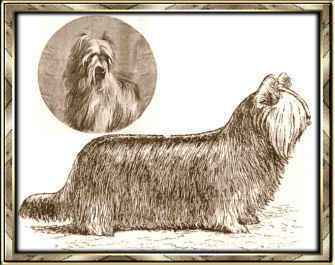
Clydesdale Terrier
The breed was finally allowed a class for Skye Terriers. In due coarse friction arose among the Skye fanciers as to which texture was correct for the breed.After much contention the silky coated blue and tan, and the all blue silky coated ones were disallowed, partly as they continually took the prize over the harsh coated dog.
The breeders of the silky coated variety wanting to continue showing and breeding their dogs renamed them Clydesdale (blue and tan) and Paisley (all blue).Thus we have two new breeds.The Clydesdale carried all the points necessary to lay the foundation for the Yorkshire Terrier.They had the proper coat texture, the desired colors and their proper placement.
Mr. Sam Jessop in the first book written solely on the breed, The Yorkshire Terrier, published in 1902 says: "Huddersfield Ben has been given the title of father of the Broken Haired Scotch and Yorkshire Terriers and pedigrees of his progeny prove this point. He was no flyer, but the result of the manufacturers of the breed.He was totally in-bred and he passed his best factors to his children.His merits as a show dog found him at great request as a stud, and luckily he possessed the rare trait of transmitting his virtues to his progeny.He was a great sire,one of those animals who make the history of the breed and whose influence is apparent generations after the progenitor has passed away".
To this day every Yorkshire Terrier descends from him, mostly through ten of his sons and one daughter.The most prominent being Huddersfield Ben II, Old Royal, Emperor, Bismarc, Hirst's Peter, Bruce and his litter brother Mozart,the one daughter being Old Alice.
Mr. B. Eastwood, who was the breeder of Ben, was asked how he had bred Old Ben and Old Sandy, both who appear on both sides of his pedigree, said that he had been informed that the original dogs brought from Scotland by the Paisley weavers had been from an accidental breeding of a Clydesdale and a Waterside Terrier (Otter terrier).
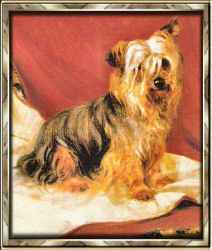
Yorkshire Terrier
1890 - From an early painting
Another early quote states: "The only relationship that a Yorkshire Terrier has with a Skye Terrier is through its main ancestor the Clydesdale Terrier (or Paisley Terrier).The Paisley due to it's coloring would have been a very minor contributor".
Although the Skye Terrier (a breed known to have existed since atleast it was first described in a book in 1547) could be called an ancestor but it becomes extremely obvious that the main ancestral breed was the Clydesdale.
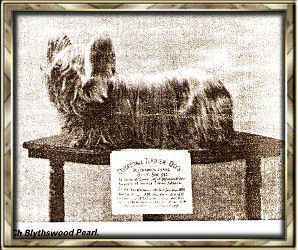
Clydesdale Champion
Shown in 1894
Ch. Blythewood Pence
A variety of the Skye said to have been in it's heyday before 1850,and probably well before that date, as in 1856 it was noted "that the breed was nearing extinction.There was however a strong movement to revive it".
In the 1980's George Shaw writing in an article for English Dog World wrote "The Clydesdale was a fancy terrier and by the time of the first Crufts show in 1891 he was a rare variety and by the end of the first world war was extinct".
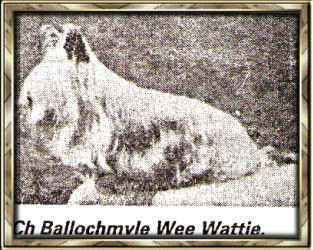
Ch. Clydesdale shown 1905
As for the Paisley he lost out as a recognized variety when in 1888 a few Glasgow Clydesdale fanciers formed themselves into a club and resolved to have the name of the variety recognized as Clydesdale Terrier.
They managed this by offering to give prizes at the principal shows if the committees agreed to give classes for the variety under the name of Clydesdale.They succeeded, and while many were still doubting the wisdom of the name change, time rolled by and the Clydesdales won the prizes and the classes.The Paisley supporters their classes gone had either to keep their dogs at home or enter them as Clydesdale.They entered their dogs thus acknowledging the name, as well as the standard colors of Blue and Tan, effectively ending the variety of the all blue silky Paisley, so he merged and disappeared in the Clydesdale.
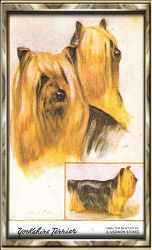
In reviewing the description, standard, pictures and the written record there really should not be any mystery about the main progenitor of the Yorkshire Terrier.That honor has to go to the Clydesdale Terrier.
Just by comparing parts of the Clydesdale standard with parts of the original 1890 Yorkshire Terrier standard the similarities are immediately apparent.
The Clydesdale Standard on coat reads:
"As long as possible, free from all trace of curl or waviness, very glossy and silky in texture with an absence of undercoat."
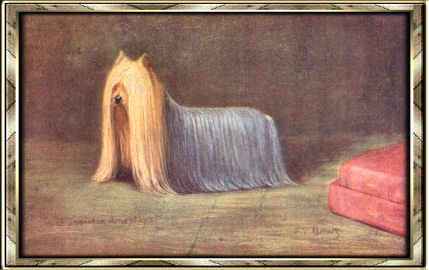
Ch.English Ch. Sneinton Amethyst 1911
The Yorkshire Terrier Standard on coat reads:
"The hair as long and straight as possible (not wavy) which should be flossy (dictionary definition of flossy is silky) not wooly. It should extend from the back of the head to the root of the tail. Color a bright steel blue and on no account intermingled with fawn or dark hair."
The Clydesdale Standard on color reads:
"A level bright steel blue - extending from the back of the head to the root of the tail, and on no account intermingled with any fawn, light or dark hairs.The head, legs and feet should be a clear bright-golden tan,free from any gray, sooty or dark hair.The tail should be a very dark blue or black."
The Yorkshire Terrier Standard of 1890 was very descriptive of the desired head color and it reads:
"The hair at the muzzle very long which should be a rich, deep tan not intermingled with any sooty or gray. Under the chin long hair about the same color as on the crown of the head which should be a golden tan and not on any account intermingled with dark sooty hairs.Hair on sides of the head should be very long,a few shades deeper tan than the top of the head especially about the ear roots."
The Yorkshire Terrier on the tail reads:
"Cut to medium length, with plenty of hair darker in blue color than the rest of the body especially at the end of the tail, and carried a little higher than the level of the back."
The Clydesdale standard having covered the tails color under color says on the tail "Perfectly straight carried almost level with the back."The Clydesdale standard on appearance reads:
"A long level dog with heavily fringed erect ears and a long coat like silk or spun glass which hangs quite straight and evenly down each side, a parting extending from nose to the root of the tail."
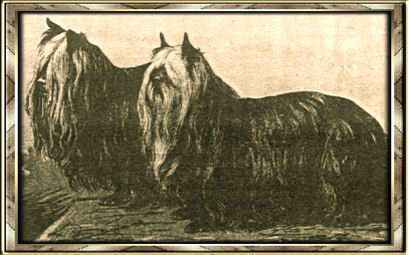
Bradford Peter and Bradford Ben
Owned by Mrs.M.A. Foster
Shown in 1890's
Ben became an English Ch. and Sired 1 Champion
and a number of Top Sires
The Yorkshire Terrier on appearance states:
"This should be of a long coated pet dog the coat hanging quite straight and evenly down each side, a parting extending from the nose to the end of the tail.The animal should be compact and neat, the carriage being very"sprightly" bearing an important air.Although its frame is hidden beneath a mantle of hair the general outline should be such as to suggest the existence of a vigorous and well-proportioned body.
The Yorkshire Terrier standard on ears was written prior to the outlawing of ear cropping and says:
"Ears cut or uncut, quite erect: uncut, small V-shaped, and carried semi-erect covered with short hair.Color to be a deep,dark tan."
As far as size is concerned the Clydesdale standard reads:
"Height at the shoulder 8 to 8-1/2 inches.Weight from 12 to 16 lbs."
The Yorkshire standard of 1890 says""Weight divided into two classes, under five pounds and over five pounds,but not to exceed twelve pounds."
While the Clydesdale (Paisley) Terrier was without doubt the main source of the breed's development,there is also ample evidence that three other terriers were involved.The Waterside Terrier,(also called the Otter Terrier),the Old English Black and Tan rough coated terrier and lastly the Toy Terrier Rough and Broken Haired who was the most dominant player with the Clydesdale in the makeup of the original stock including the Broken Haired Scotch Terrier.
The earliest picture of any terrier in England was of a small black and tan terrier which appeared in "Hours of the Virgin", an illuminated manuscript circa 1500.It was called a Waterside Terrier.
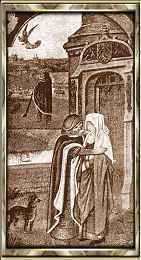
Reference is made that King William IV, of England in the late 1700's requested a friend to procure for him "a Blue and Tan Waterside Terrier with a coat six or seven inches long, weighing about 6 lbs."
W. Youatt writing of the Waterside describes them "as being Black and Tan and as having the distinction if early writers were correct of being the source of all breeds of terriers".According to the earliest history of the dog there existed in England "a rough haired black and tan terrier, occasionally grizzle (defined as bluish-grey or iron-grey)thicker in skull, shorter in head, and stockier in body.The tan of these dogs was extensive and a lighter shade than is usual in modern day specimens.They went to earth after game as well as being known for hunting with ferrets pursuing badgers and otters in the river.They had great courage and stamina".
The crossing of the long coated terriers with other pure bred terriers was said to have established the various fancy breeds of terriers (both the Clydesdale and the Yorkshire were so called fancy terriers).
In 1834 The Penny Magazine gave this description of the Waterside Terrier."He is quite a handsome, sprightly dog, generally black on the back, sides, upper part of the head, neck and tail. The belly, throat are a very bright reddish brown with a spot of the same color over each eye, small in size".
In 1877 Mr. Wilkinson (an early fancier of Yorkshire Terriers) wrote an article for The Stockeeper (which was later incorporated by Peter Coombs in his 1891 article in The American Book of The Dog) in which he writes on the origin of the Breed. Mr. Wilkinson quotes John Richardson, another early breeder living in Halifax. Mr. Richardson says "that the breed (Yorkshire Terriers) traced to the Waterside Terrier" which he described "as being a game little animal occasionally grizzle in color, weighing about six pounds with a coat from four to six inches in length, with a silver head".
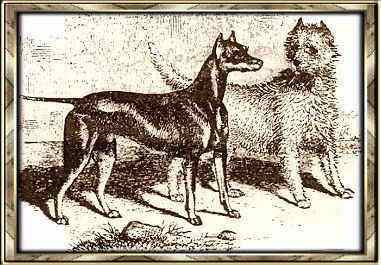
Old English Smooth and Rough
Broken Haired Toy Terrier
The Old English Black and Tan Terriers were described as a very old breed. Some of these terriers were long-legged and some had short crooked legs.The crooked legged ones were said to be smooth coated and the straight legged terriers were said to have coats of shaggy hair.Their weight was from twenty to twenty-five lbs. and their color was black and tan or grizzle and tan.
This Old English Black and Tan, Blue and Tan or Blue and Fawn Rough Broken Haired may have been bred into the mix, but it was becoming extinct as the Yorkshire was developing and thus would not have been readily available and since it was a larger dog it was probably not a major contributor.
The small sized Waterside Terrier also became rarer and rarer as it followed it's path to a larger terrier which became known as the Bingley Terrier and then finally emerging as the Airedale Terrier.

The Infantry certainly would appear to be
Rough Coated Toy Terriers even though
they are labeled Yorkies
It was the Broken Haired and Rough Coated Toy Terriers - Black and Tan or Blue and Tan that became the second major contributors.
The early developers of the breed gave full recognition of the connection to these toy terriers.Not only by registering their dogs as Toy Terriers, but actually breeding and showing them as Toy Terriers until the Yorkshire Terrier was given his own designation class and the Rough Coated - Broken Haired Toy Terrier joined their brethren the Broken Haired Scotch and Yorkshire Terrier as a single breed recognized as the Yorkshire Terrier.
These Toy Terrier, Rough and Broken Haired, carried the genes for coat texture, the desired size as well as the gene to change the colors from black to blue and to clear the black from the tan.The Clydesdale of course also carried the coat texture and the ability to change and clear colors.
There is a great deal of evidence that these toy terriers were acknowledged by these early fanciers as full members of the breed.
At shows from 1860 - 1873 there were classes for Toy Terriers Rough and Broken Haired, Black and Tan and Blue and Fawn.The classes were for dogs not exceeding 5 lbs., 5 lbs. not exceeding 7 lbs. and 7 lbs. not exceeding 9 lbs. as well as classes for Broken Haired Scotch Terriers under 5 lbs.and Scotch Terriers under 6 lbs.
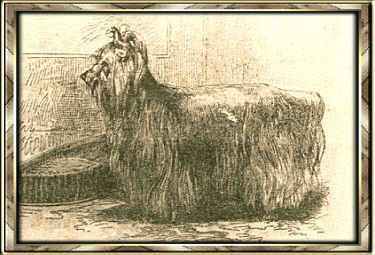
Ch. Ted
Owned by Mrs. M. A. Foster
Note: He has a ribbon
At the 1860 show in Birmingham Mr. Wilkinson an early fancier and later a Yorkshire Terrier breeder won the class for Broken Haired Toy Terriers under 4 lbs. At the Crystal Palace show held in London on June 17, 18 and 19 1873, Mrs. Mary Foster (Huddersfield Ben's owner and the most prominent early breeder and exhibitor of Yorkies, as well as the first female judge in England), showed her Bradford Kennel dogs, winning the first three placings in Broken Haired Scotch Terriers with Dundreary (KC no. 3695), Emperor (KC no. 3609) and Bruce (KC no.3595). In the class for Toy Terriers Broken Haired under 5 lbs.Mrs. Foster again won the first three placings with Cobden (KC no. 3985),Little Kate (KC no. 4007) and Tiny (KC no. 4022). Emperor, Bruce and Little Kate were all sired by Huddersfield Ben.Cobden was a grandson.
This record has always existed proving that these early fanciers were admitting to the connection with Toy Terriers Rough and Broken Haired, and thus proving that these breeds were well bred into the breed.There were numerous varieties of these diminutive terriers.
Their main qualifications beyond their color and texture, was that according to their standards laid down for each type they had to weigh between three and seven lbs.
Early Yorkie breeders such as Peter Hirst, J. Inman, J. Shackleton, Tom Burgess, Miss Alderson, Lady Gifford, W. J. Lucas, Mr. Grossley and Mary and Jonas Foster all registered and showed in both classifications. Miss Alderson's Mozart and Peter Hirst's Peter (both sons of Huddersfield Ben) were top sires of many early winners and they still appear in the background of the pedigrees of present day dogs as do a number of Mrs. Foster's dogs.
The facts and evidence makes it apparent that the major breeds responsible for present day Yorkshire Terriers are the Clydesdale (Paisley), the Broken Haired Scotch Terrier and the Rough and Broken Haired Toy Terriers. The Broken Haired Scotch was undoubtedly a descendent of the cross of the Clydesdale and the Waterside.
When the Yorkshire Terrier became a separate recognized breed, more and more fanciers and breeders began promoting the breed. It became the most desirable pet of ladies during the Victorian Era. Many a supposedly demure Yorkie adorned with ribbons rode on a fancy satin pillow, in the carriage beside it's owner.
As with many such new fashion trends, the interest crossed the ocean to the USA causing a rising demand. There were already breeders and fanciers of Rough Coated Toy Terriers, Broken Haired Scotch Terriers and Silky Coated Blue and Tan Skyes (Clydesdales) or all Blue Skyes (Paisleys) waiting to consolidate all their Silky Coated Little Terriers as a distinct recognized breed. Now they had a name - Yorkshire Terrier.The affect was immediate and in a very short period Yorkies were being bred in 22 states.
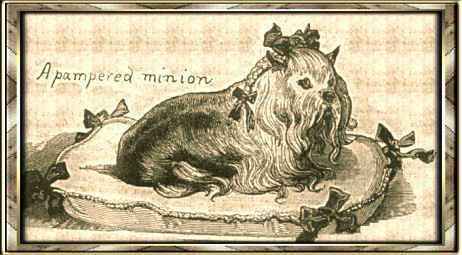
Westminster 1878
The only available records with any information on the early years or the breed's beginnings in the USA come from the records of dog shows which were started in the late 1860’s but really came into play in the 1870’s.The National American Kennel Club Stud Book Volume II founded in 1876 was published in 1885, and was taken over by the American Kennel Club, who started publishing show records in 1884.
Yorkshires probably arrived with the immigrants from Scotland and from the manufacturing towns of Northern, England. It's probably safe to assume they brought their dogs along with their other possessions. The dogs would have arrived as Broken-haired Scotch, or Rough Coated Toy Terriers or even as Silky Coated Skye Terriers (Clydesdale Terriers).
From these early records there is ample evidence that through the years there have always been breeders who maintained, and improved the breed,and who passed on their knowledge to the next generation.
One of the earliest breeders and exhibitors were Henry and Lena Kisteman of New York City, N.Y.They first showed at Westminster in 1877 and continued showing and breeding till 1898. At this show they showed “Dandy” as a Skye and “Lucy” was entered in the class for Toy Terriers not exceeding 5 lbs.The following year “Dandy” was shown as a Toy Terrier, while “Lucy” was entered in the class for Yorkshire Terriers not exceeding 5 lbs.The Kisteman’s also showed “Prince” and “Terry” in the same class with “Lucy”: (sexes were not divided).During the years that they were active they completed titles on at least two of their Yorkshires.“Ch. Hero” was shown in both 1883 and 1884 in the Yorkshire Terrier class for Champions over 5 lbs. and “Crickie” was also shown in Yorkshire Terrier Champion class for those not exceeding 5 lbs. Ch. Hero appears as the Great Grandsire on the AKC Certified Pedigree of “Joker II” who was born in 1889 and was bred by Mr. E.B. Plato of Chicago, Il. and owned by Mr. Hugh McAuley.Mr. McAuley bred from 1883 to 1891.Another early Chicago breeder was Dr. N. Ellis Oliver who finished the first female Champion of Record in 1895.Dr. Oliver bred from 1890 until 1900.
Mr. and Mrs. W. D. Haines of New York City were also early breeders At Westminster in 1878, they showed a total of five Yorkshires. In the Yorkshire Terrier over 5 lbs. class they showed “Bright” 2-1/2 years old and “Beauty” 3 years old.In the class for Yorkshire Terriers under 5 lbs. they showed “Scraps” 15 months old, “Trip” 2 years old and “Snap” 21 months old.The last two dogs carried this notation: “That they were bred by the Jolly Boys and that each of them were said to have been the winners of nearly 400 prizes”.
“Snap” was also the winner of the special prize awarded for “Best Yorkshire Blue and Tan Terrier – cup or cash value $50.00”.
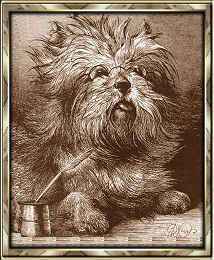
Toy Terrier 1870
The following year they exhibited “Charlie” in the Yorkshire Terrier class not exceeding 5 lbs. winning first place and winning the Special Prize with “Charlie” for “Best Toy or Pet Dog Exhibited by a Lady”.
The earliest breeders who had the most lasting effect, and who established the earliest American bloodline were Mr. and Mrs. Ferdinand Senn of New York City. They first exhibited in 1878 and remained active till 1916,a total of 37 years.
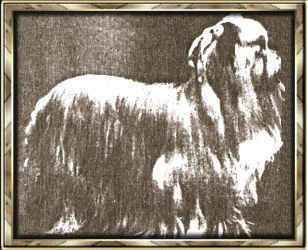
Ferdinand Senn's
Ch. Queen of the Fairies
1905
Although they imported many dogs from the top breeders in England,their first champion finished in 1905 was Ch. Queen of the Fairies,a homebred sired by their homebred “Little Gem”.This male became the start of the oldest American line that can be traced down through pedigrees.His son “Little Gem II” sired “Little Gem III” who in turn sired Peter Menges’ Ch. Roxy II who then sired the brothers “Ch. Prince” and “Ch. Billy II”. Mr. Menges lived in Philadelphia and bred from 1896 to 1908.
Both Ch. Prince and Ch. Billy II appear in Anne Radcliffe’s Gold Mount line, which she bred in Philadelphia from 1913 to 1924. Miss Radcliffe’s top winning dog was Ch. Little Babs who was the top winning Yorkie in 1921 and won the breed that year at Westminster. Upon Mrs. Radcliffe’s retirement her remaining dogs were sold to Mrs. Harold Riddock of Detroit,owner of the Olinda Kennel. Gold Mount dogs were amongst the foundation at Olinda.Through Mrs. Riddock the line carried on into Mrs. Goldie Stone’s Petit line, and from there to all those kennels that were founded on Petit lines.
Further evidence of the Senn’s legacy to the breed was that Ch.Senn King was sold to August Kohlmacher, of Chicago.King was a son of Little Gem III.Ch. Senn Senn King’s son “Brandy” was sold to Mrs.Florence Teschemacher a St. Louis, Mo. breeder from 1891 to 1909.Through children of both King and Brandy, the Senn line carried on to one of the earliest and longest breeders on the West Coast, Mrs. W. A. Beck of Watsonville, Calif., Niquoia Kennels who bred from 1907 to 1937. Mrs. Beck also purchased O’Boy from Mrs. Teschemacher finishing him to his title.For reasons known only to Mrs. Teschemacher she had changed his name,which was Rosedale Teddy, to O’Boy. During the lifetime of Mrs. Beck’s Niquoia Kennels, she never used the name as either a suffix or prefix on any of her dogs. Mrs. Beck bred to every top stud in the U. S.
Miss Lillian C. Moeran, Ashton (America) Kennels was started with the Senn’s assistance when in 1899 she purchased “Charley Boy”.The next year Miss Moeran. purchased “Ashton Premier”, a dog bred by Mrs. Senn out of imported parents. “Premier” was Miss Moeran’s best-known dog.Miss Moeran married and her name became Mrs.Raymond-Mallock and she continued to breed until 1929 in England.
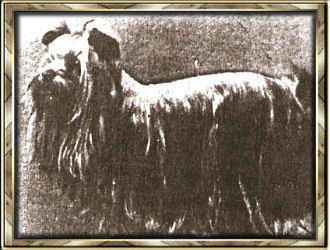
Ashton Premier
Also carried name of Ashton-More Premier
Owner: Mrs. Lillian C Raymond-Mallock
Breeder: Mrs. Senn
In 1907 she published the first of her two books, “Toy Dogs”, and Ashton Premier was used as the representative for the breed. In the second book, “The Up to Date Pekingese and All Other Toy Dogs”,Premier was used to illustrate the breed but he now carried the kennel name of Ashton-More, a change necessitated by the fact that there already existed a well known kennel using Ashton as it’s name.Premier carried Mrs.Senn’s breeding to several English lines.
Mr. Peter Coombs, of Bangor, Maine was a well-known early breeder.He established his Bradford Kennel in 1888 and bred till 1908. He used Bradford as his kennel name even though this was the kennel name that the Fosters used in England.He probably adopted this prefix from his imported Bradford Harry who became the first American Champion of record in 1890.Mrs. Foster did not breed Harry; it was she who sold Harry to Mr. Coombs.
Mr. Coombs wrote in his article on the breed, the first American article to have been written in length on the breed, in “The American Book of the Dog” published in 1891 “Bradford Harry is at present (1890) the only Champion of Record of his breed in America, and has appeared in Boston, New York, Troy, Lynn, Buffalo and New Bedford, where he won nine (9) first prizes in succession, and in addition, he has made the remarkable record, of which few dogs of any breed can boast,that of winning every special prize for which a Yorkshire Terrier was eligible to compete for at the shows where he has appeared.In one show alone he won Specials for “Best Yorkshire Terrier, Best Rough-coated Terrier any breed,and smallest dog in the show”.
Harry was a grandson of Huddersfield Ben on his dam’s side and great grandson on his sire’s side. He was a prominent sire. His son Prince Harry was one of Mrs.Teschemacher’s stud dogs and through him Mrs. Beck,who owned a daughter of Prince Harry, acquired his bloodline.

Ch. Bradford Harry
Eng. Imp.
Owner: Peter Coombs
"Bradford"USA"
1891
The reason that Mr. Coombs could claim that Ch Bradford Harry was the first champion of record, was that although there were earlier champions that are recognized by AKC was that champions were listed, a change when the American Kennel Club was founded.When that happened the rules for becoming a champion were altered.Primarily they remained the same, but there were conditions.First a dog must be registered with AKC or be listed with AKC to be shown. A dog having won a title prior to the new rules could become champion of record if that champion was then registered with AKC, otherwise it could not be called champion of record.
The rules for becoming a champion of record were passed in 1893 and took effect on January 1, 1894. The rules were that a dog must win four first prizes in the open class after which it was eligible to compete in the challenge class.The dog was a champion when it had won three first prizes in this class.A dog now became a champion of record based purely on the fact that these wins and his championship were now recorded in the AKC Gazette.
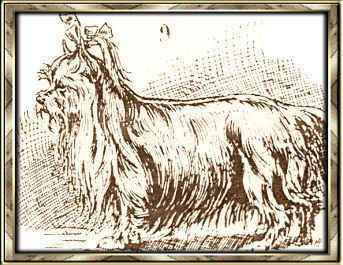
Mrs. Foster's Prince A.I.
(Note: He has a ribbon)
Prince was a grandson of Huddersfield Ben through his dam
Lady, imported to the USA by Charles N. Symonds.
He also showed Venus in 1890
In 1895 a further qualification was made that surely caused confusion as it stated:
“A dog having won 3 first prizes in the challenge class, one of which shall have been won at a show offering not less than $1000.00 in cash prizes shall have the privilege of the title champion.(Note: this qualification does not apply to shows held west of the o95 west longitude)
Just think of trying to figure out if you had met these qualifications.
By 1900 the U.S. had forty-five states and there were breeders and fanciers in twenty-two of them.In 1884 The Practical Dog Book for both the professional and amateur fancier stated, “We now come to the breed that is preeminently the ladies pet, which by all persons ignorant of doggy lore is consistently being confounded with Scotch and Skye Terriers.The Yorkshire Terrier is the handsomest of all long haired terriers and makes a most bright, active and companionable indoor pet and is, besides, the most fashionable dog today in this country,not excepting the Pug.”
Over fifty percent of the early dogs that were shown were imported from England and Scotland, which would have entailed a long sea voyage.
It is apparent that these early breeders were very dedicated.Besides their importations these breeders sold, bought, bred to and from stud dogs as well as showed all across the whole continent.
Even with the difficulties that would ensue with traveling, by train or carriage, they took full advantage of the quality dogs available miles away just to improve their bloodlines.
"While considering the problems of traveling with dogs this way and time that would be necessary, contemplate these instructions for bathing your Yorkie that were given in 1893 by “Ashmont” In Kennel Secrets.
“While soap can be applied to the coats of most dogs there are at least two exceptions, namely the Maltese and Yorkshire Terriers and for the former raw eggs are the best but for the latter soap suds only”.
“A foot pan is as good as anything to do the washing in. Place this on a table, put in as much lukewarm water as will nearly reach to the dogs elbows, mix in the soap until you have suds, never rub soap on the dog”. (Note: shampoos did not exist, the commodity used here is a bar of soap).“Now take a brush, a hair brush that has a handle and long bristles, dip it in the suds and brush from the center of the back down, and always one way. The head must be washed in the same way from the center downward, in fact use the brush just as you would when not washing.”
“When you are sure you have reached all parts and the hair and skin are thoroughly clean pass the hand from the center of the back downward and force out as much soap and water as you can, then use a sponge in about the same way.That done,lift the dog out and put him in another tub which is all ready on the table containing clean lukewarm water, brush him, just as you did with the suds, until all the soap is out, with the hands and sponge get out as much water as you can.Remove him from the tub and stand him on the table, put over him a cloth or towel and pass the hands over it with gentle pressure, that it may take up some of the water that remains in his coat, but on no account must the hair be rubbed or ruffled”.
“Now after combing him with a comb that has widely set teeth, begins the long and tedious process of drying.For this you have two or three brushes, and while one is being used, the others must be drying in front of the fire. (There weren’t any hair dryers,either.)
In the beginning of dog shows, classes for Yorkshire Terriers were not divided by sex. Both sexes competed in the same classes. The first time the classes were divided by sex was 1896.
Through the years this situation of not dividing the sexes has been used whenever there has been such a small number of Yorkies being shown,that majors would have been nonexistent were the sexes not shown together. Once the point system was established this meant that when not divided there were only one set of points won by either the male or female judged winners.
From 1877 to 1896 the classes provided for the breed were divided by weight.Classes were offered for Yorkshire Terriers over 5 lbs. or Yorkshire Terriers not exceeding 5 lbs.Unlike England no weight limit was given for the over 5 lbs. weight class.As was true in England at this time there were many Yorkies being shown in the classes for “not exceeding 5 lbs”.
In 1890 there were 26 exhibitors, a statistic that could now be traced due to the AKC printed records of dog shows and registrations.In 1900 there were 22 exhibitors with 11 new registrations.1909 found 69 exhibitors and 30 registrations.By 1939 there were 69 registrations, 1940 just a year before WW11 saw 91 registrations.But by 1943 there were only 33 registrations.
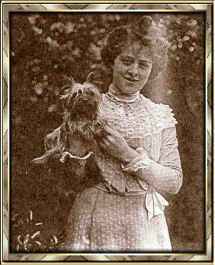
With the coming of the 1900’s a new era and way of life came into being.Many homes (not all) had electricity.In 1903 the first cross country,coast to coast trip of 5600 miles was made by an automobile, a trip that required 63 hours and 36 minutes,primarily on nonexistent roads.By 1908 the trip took 32 days.With the completion of the first transcendental highway, the Lincoln Highway,in 1913,as well as a slew of new paved roads the trip could be made in 6 days.The first airplane had been flown, and the final leg of the undersea cable was finished making it possible to send cables around the world.
In to this new era came a new group of dedicated breeders to join the pioneers who had carried on from the early years.
In this new group of breeders were several who had lengthy connections with the breed and whose dogs contributed to the upward progress of Yorkshire Terriers.
Probably the most important breeders during the period leading up to the First World War were Mr. and Mrs. George Peabody, owners of the Douro Kennel in Newton, Mass.They commenced breeding in 1903 and were still active through 1919.They finished their first champion in 1906, the imported Ch. Armley Necco. Most of their dogs were based on imported dogs of Armley and Pellon breeding except for Masterpiece, a grandson of Halifax Marvel.Necco and Masterpiece both sired offspring for a number of upcoming breeders.
Mr. Peabody was the leading influence in the founding of the first club for the breed, the first Yorkshire Terrier Club of America.The Club started around 1913 and remained in existence till sometime in 1919.
Besides being secretary, Mr. Peabody was the liaison person with the AKC.Mr. Peabody was also a judge.

Ch. Douro Wee Dolly
1911
Breeder: George Peabody
"Douro"
Owner: Anna Bell
Madero Kennels, Bairdstown,CA
Anna Bell’s Madero Kennel in Bairdstown, California was based on the Peabody’s breeding.Miss Bell purchased Ch. Douro Wee Dolly and Ch. Douro Saucy Bob from them.Saucy Bob’s name was changed to Ch. Madero Saucy Bob and he was later sold to Mrs. W. Beck upon Miss Bell’s retirement.
1913 saw the start of the Gatenby Kennel of Mr.and Mrs.William C.Thompson, of New York City.They continued breeding until 1942.Their imported Ch. Gatenby’s Saint Wilfred’s King,a grandson of Eng. Ch. Armley Fritz and Eng. Ch. Ashton Duke was the top winning Yorkie in 1915, having lost out on this honor the year before to the Peabody’s Ch.Douro Prince the top winner in 1914.
Mrs. Thompson, besides judging, was the President of the second club founded for the breed: The Yorkshire Terrier Association of America.This club co-existed for sometime with the first Y.T.C.A. having been started round 1915 and lasting till about 1924.The Association, according to AKC records, held a Specialty in 1918.Unfortunately the records do not tell us when it was, or who were the winners. Thus we are left with only acknowledging their existence and giving them credit for their work.
Joining the ranks of active breeders in 1920 was Andre Patterson of Buffalo, N. Y., with his Dandy Kennel.Most of his dogs were based on Canadian dogs that were English imports, such as Can. Ch. Little Briton, Can. Ch. Little Monitor and Can. Ch. Star of Pellon who was the first Yorkie to win BIS in Canada in 1916 at the Canadian National in Toronto. Star was what would be called a war refugee as the Greenwood’s sold him to Canada because they wanted him protected during World War I.
Mr. Patterson’s Earl Byng (a son of Can.Ch.Lord Byng and a˝brother of Mrs. Riddock’s Canadian born Am./Can.Ch.Bond’s Byngo) was the first Yorkie to place in the Toy Group at Westminster where he placed 4th in 1933. Mr. Patterson also owned the 2nd Yorkie to place 3rd in the Westminster Toy Group in 1934,Am./Can.Ch. Haslingden Dandy Dinty,a son of Can.Ch.Little Briton.
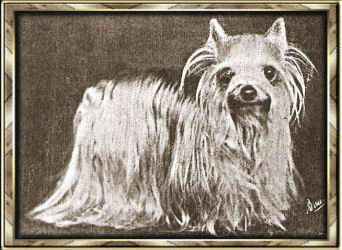
Ch. Rochdale Queen Of the Toys
Best of Breed, 3rd in Toy Group at Westminster 1935
Owner: Mr. & Mrs. John Shipp,
Edgewood Rhode Island
Dandy Dinty was the sire of the next Yorkie to take a group placing at Westminster.Mr.and Mrs.John Shipp’s Dinty daughter Ch.Rochdale Queen of the Toys placed 3rd in the Toy Group in 1935.The Shipp’s had started their line in 1920 and bred until 1939 originally in Providence,R.I.but later moved to Edgewood,R.I.Their imported Ch.Robinhood was a successful show dog as well as a top sire.Mrs. Riddock’s Olinda line profited from their dogs,one of her top brood bitches being Rochdale Goldie.Through Mrs. Riddock’s breeding the Rochdale line extended into Mrs. Goldie Stone’s Petit line.
Mr. Sam Baxter of New York began breeding in 1928 and continued until 1940.His first show dog was purchased from the Thompsons.Gatenby’s Bobs was imported by them and sold to Mr. Baxter.His first big winner was Bobbie B a son of Ch. Heslingden Dandy Dinty.However his best winning dog was Bobbie III (naturally sired by Bobbie B II).Bobbie B 111 placed 3rd in the Toy Group at Westminster in 1936 and 3rd again in 1937.
Mr. Baxter was elected President of the 3rd attempt to have a breed club.This club was also named The Yorkshire Terrier Club of America and was started in 1937 but folded with the onset of World War II.
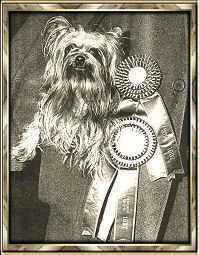
Bobby B lll
leaving Westminster 1937 with owner,
Sam Baxter
Arthur and Mary Mills began the Millbarry line in 1936.Their kennel was originally in Roseland, N.J.but they moved to Devon, Pa. The Mills showed until around 1952 when Mr. Mills passed away.Mary Mills continued her interest in the breed throughout her lifetime and was a charter member of the present day Y.T.C.A.
The Mills Ch. Miss Wynsum, an English import, was the first of the four Yorkshire Terriers who have won the Toy Group at Westminster, which she did in 1938.
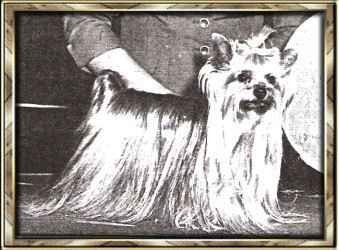
"Tuffy"
Irish import Ch. Star Twilight of Clu-Mor
Owned by Mrs Leslie S. Gordon and Janet E. Bennett
Won the toy group at Westminster in 1954 and 1955
26 All Breed B.I.S.
81 Toy Groups
22 Group Placings
5 YTCA Specialty's
Sired 15 Champions
The Mills again won the Toy Group with their homebred Ch. Millbarry Sho-Sho in 1944. The other two Yorkies to be awarded first in the Westminster Toy Group were the Wildweir Kennels (Joan Gordon and Janet Bennett) Irish import Ch.Star Twilight of Clu-Mor in 1954 and in 1955, followed by 2nd in the Toy Group in 1956.The last Yorkie to win the group at Westminster topped the others by winning Best in Show in 1978,was Am/Can. Ch. Cede Higgens owned by Bill and Barbara Switzer of Seattle Washington, and was bred by C.D.Lawrence.
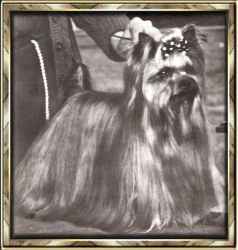
Ch. Cede Higgens owned by Bill and Barbara Switzer
Bred by C.D.Lawrence
BIS at Westminster in 1978 when he retired
33 All Breed B.I.S.
71 Toy Groups
10 Specialty's
Sire of 34 Champions
The Mills bred and imported a number of top winners and their breeding became the foundation for quite a few lines, especially on the west coast.Their imported Ch. Suprema was the top stud dog at this time.
Their breeding was also prominent in Helen Palmer’s Vermont Kennel in Pittsfield, Vermont, who started breeding in 1922 and continued until 1960.Besides breeding from the Mills,Miss Palmer also bred with Sam Baxter,the Thompson’s and with Goldie Stone.
Another breeder helped by the Mills was Mrs. Lily Harris, of Yorba Linda, California. Mrs.Harris began in 1937 with Ch. Millbarry First Lady,a daughter of Ch.Suprema.Lady was the dam of Ch.Fritty,the dog who was used as the model for the present Y.T.C.A. club pin.Mrs.Harris was elected Vice President of the 2nd Y.T.C.A. club.She was also a charter member of the present day Y.T.C.A.
Ch. Suprema sired Kay Finch’s Ch. Tidbit. Mrs. Kay Finch bred the Crown Crest Yorkshire Terriers starting in 1937 when she purchased her foundation bitch Peggee of Belvedere from Lily Harris. Peggee was a daughter of Ch.Millbarry First Lady.he was located in Corona Del Mar, California.Mrs.Finch was elected first President of the present day Yorkshire Terrier Club of America founded in 1951.Kay Finch was a brilliant sculptor and designed a number of wonderful Yorkie pieces as well as many other subjects.
On the west coast Mrs. W. A. Beck continued active adding dogs from the Shipps Rochdale line, Mrs. Riddock’s Olinda line, Mr.Patterson’s Dandy line and Goldie Stone’s Petit line.Mrs.Beck retired in 1938 and sold her last breeding bitch Boots to Mrs. Stone.
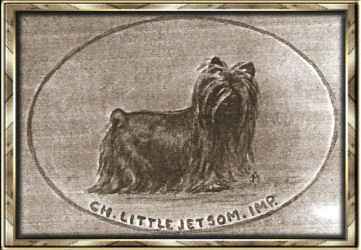
Ch. Little Jetsom
Owner: Col. John Rose
Meanwhile in Canada Col. John Rose had starting breeding in 1930.Many of his females played an important part in the lines of the new breeders in California. Col. Rose bought from Goldie Stone and he had several dogs from her. Col. Rose owned the other Can. BIS winner from this period.His Can/Am Ch. Little Jetsom won 3 all breed Best in Shows and 19 Toy Groups.Col. Rose sold Rose’s Miss Canada to Mrs. Stone. Miss Canada was the dam of Am/Mexican Ch. Petit King of the Toys owned by Alfonzo Diaz of Mexico.
In the Midwest Mrs. Harold Riddock started her Olinda line in Detroit, Mi. in 1924 with the purchase of Monitor’s Cricket from Mrs. Orrae M. Billings of Norwich, N.Y. Mrs. Billings’ dogs were based primarily on Canadian breeding and she bred the Monitor line from around 1920 till the late 1930’s.Her top-winning dog was Ch. Monitor’s BlueBelle.
Mrs. Harold Riddock was prominent in the foundation of most of the kennels during the late 1920’s and 1930’s.
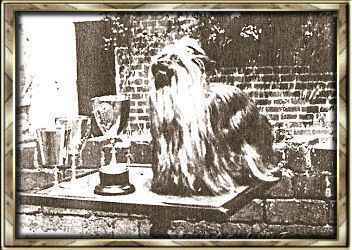
Am/Can Ch. Bond's Byngo
Owner: Mrs. H. Riddock
Her most influential dog was Am/Can Ch. Bond’s Byngo whose sire was Can. Ch. Lord Byng who also sired Andre Patterson’s Earl Byng.Ch. Bond’s Byngo was Canadian bred by Mrs. O.M. Bond and Mrs. Riddock purchased him from his owner Harry Draper of Toronto, Can. in 1928. Mr. Draper was a charter member of the present day Y.T.C.A. and bred from 1920 till 1952. His best-known winner was Am/Can Ch. Petit Lord Byngo of Walkley who was bred by Goldie Stone.
(Walkley was Mr. Draper’s kennel name)
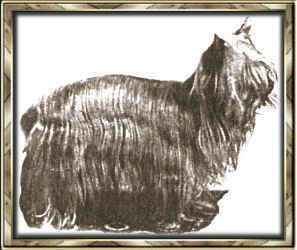
Ch. Rochdale Queenie
1925
Owner: Mrs Harold Riddock
Breeder: Mr. & Mrs. John Shipp
Mrs. Riddock sold Mrs. Stone her foundation stud dog Ch. Petit Byngo Boy who sired 5 champions. Byngo Boy had two brothers who were also champions.
Mrs. Stone won titles with 18 champions many of whom either won toy groups or placed in them. Mrs. Stone’s Petit Kennel was located in Columbus, Ohio and she bred from 1929 to 1954. One of her original foundation bitches came from Mr. and Mrs. Shannon’s yorkies.
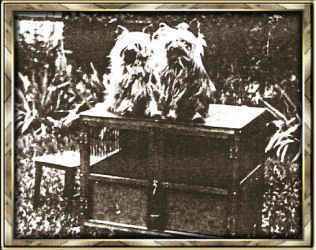
Blue Dandy & Master Quality
Mr. & Mrs. Henry Shannon, of Fox River Grove, IL
Mr. and Mrs. Henry Shannon bred in Fox River Grove, Ill. from 1927 till 1945.They imported most of their dogs from the Clenshaw’s Harringay Kennels and from Mr. Scolley’s Mendham line, and these are the two names that they used here in the U. S., which tends to confuse things.Their top stud dog was Harringay Quality Boy.One of Mrs. Beck’s last stud dogs was Jolly Boy, purchased from Mrs. Baldwin’s Fairie Kennels in Sioux City, Iowa.olly Boy was sired by Mrs. Riddocks Ch. Bond’s Byngo and his dam was a daughter of the Shannons’ Quality Boy.
With the birth of Mrs. Stone’s homebred Ch. Petit Byngo Boy and the mating of him with Mrs. Stone’s Madame Be You, the bitch she had purchased from the Shannons the Petit line was established. Madame Be You was bred to Byngo Boy five times and produced 5 champions. Two sisters from these crossings became top group winners. Ch. Petit Baby Jill won 9 toy groups and Ch. Petit Wee Wee won 14 groups. Mrs. Stone’s Ch. Petit Magnificent Prince became the 1st American-bred yorkie to win Best in Show, which he did in 1954.
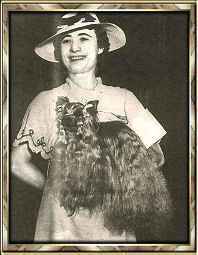
Goldie Stone pictured winning a Group 1
in Columbus, OH in 1938 with
Ch. Petit Wee Wee
Goldie passed away March 25th 1996.
She would have been 106 years old a few days later.
She was a pioneer breeder of the Yorkshire Terrier and is mentioned in many Yorkie publications.
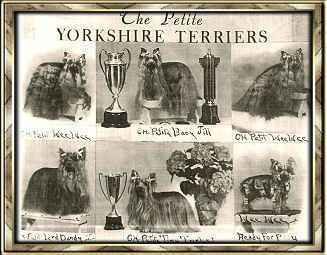
Goldie Stone's dogs
Since 1890 when there were 26 exhibitors and 1943 when only 33 dogs were registered for the year, our breed has climbed in registrations thus placing our breed high in the top ten of all breeds. The responsibility of protecting the breed and it’s standard now falls into the hands of those breeding now and those who will in the future.The past is what we’ve bred from, the present is what is done now, and the future is what is passed on to those who will carry on.
BIBLIOGRAPHY
Terriers by Darley Matheson 1900
English Kennel Club Stud Book 1859 – 1874
Show records Scotch, Toy Terriers, Broken Haired Terriers
Registration for Class XL Toy Terriers (Rough and Broken Haired)
Registration for Class XXXll Broken Haired Scotch and Yorkshire Terrier
The Complete Toy Manchester Terrier by Dixie Dempsey – 1950
The Book of the Scottish Terrier by Fayette C. Ewing – 1948
“Our Dogs” Article on Yorkshire Terriers by Annie Swan – 1961
Clydesdale Article Dog World - 1958
The American Farmer’s Pictorial Encyclopedia of Livestock
By Jonathon Perion and A. H. Baker 1881
Toy Dogs by Mrs. Lillian C. Raymond-Mallock - 1907
The Up-To-Date Pekingese and all other Toy Dogs
By Mrs. Lillian C. Raymond Mallock – 1916
The New Book of the Dog
By Edward C. Ash – 1938
Toy Dogs, Their Points and Their Management
By Frank Townsend Barton – 1913
The Twentieth Century Dog
By Herbert Compton – 1904
The New Book of the Dog
By Robert Leighton – 1907
The Complete Book of the Dog
By Robert Leighton- 1922
Hutchisons’s Popular Illustrated Dog Encyclopedia
By Walter Hutchinson – 1935
The Encyclopedia of the Kennel
By Vero Shaw – 1913
The Yorkshire Terrier Handbook By Annie Swan – 1958
The National American Kennel Club Stud Book Vol.ll 1885
Yorkie Registration p.237
The Yorkshire Terrier By Col. Hector F. Whitehead – 1961
The Yorkshire Terrier, It’s Care and Training
By Osman A. Sameja – 1978
The Yorkshire Terrier Club Year Book (England)
Editor Janet Campion
The Northern Counties Yorkshire Terrier Club Xmas Newsletter
Catalogue Annual Spring Show at Victoria City, K. C. Victoria, B. C.
Canada – 1921
The Northern Counties Yorkshire Terrier Club Limited Show
Catalogue – 1954
The Chronicles of Baba Mr. Montgomery-Campbell – 1895
The Dogs of Great Briton, America and Other Countries
By Stonehenge – 1887
Youatt on the Dog By William Youatt – 1846
The Dog In Health and Disease By J. H. Walsh
“Stonehenge” – 1872
Our Friend the Dog By Gordon Stables – 1884
Quote from “Penny Magazine By Lord Broughton - 1834
Modern Dogs (Terrier Vol.) By Rawdon B. Lee – 1896
The Dogs of Scotland By D. J. Thomson Grey – 1891
The Dog By Idstone – 1872
C.S.R. Blue Book of Dogdom – Standard of the Breeds – Part Two – 1917
The Yorkshire Terrier By S. Jessop – 1908
The Yorkshire Terrier By Aileen Markley Martello
The Yorkshire Terrier – A Beginners Handbook
By Fay Gold – 1966
The Story of Goldie V. Stone By Fay Gold – 1967
Your Yorkshire Terrier By Morris Howard – 1972
All About The Yorkshire Terrier By Mona Huxham – 1971
Article English Dog World – Oct. 3, 1980
Daddy of Them All – The Old English Black and Tan Terrier
The Popular Yorkshire Terrier By Ethel Munday – 1958
The Dog Book By James Watson – 1905
Our Home Pets (Chap. XVlll) By Miller – 1916
including handwritten notes by Goldie Stone
Kennel Secrets By Ashmont - 1893
The Practical Dog Book For Both The Professional and Amateur Fancy
By Associated Fanciers of Philadelphia – 1887
Our Dick By Willard Brown Harrington – 1894
The Australian and the Australian Silky Terrier
By W. A. (Fred) Wheatland – 1964
Terriers Their Points and Management By Frank Townsend Barton – 1900
The American Book of the Dog
Editor G. O. Shields – 1891 Chapter on Yorkshire Terriers – Part Two – 1917
By Peter B. Coombs
|
|
|
 |


